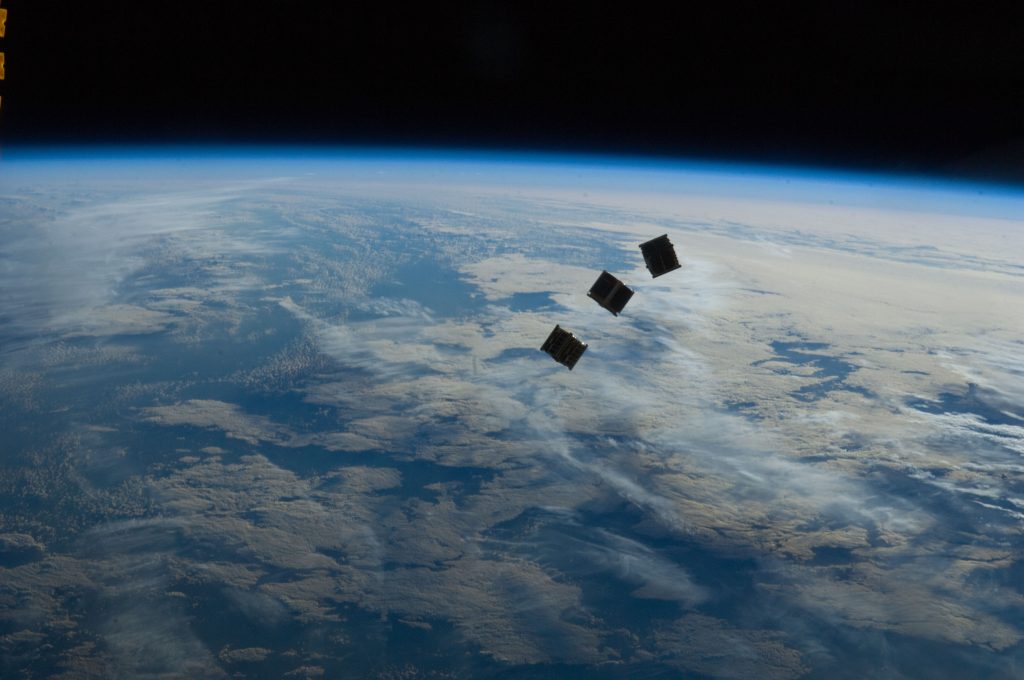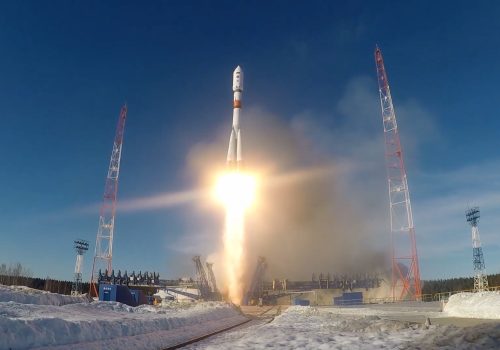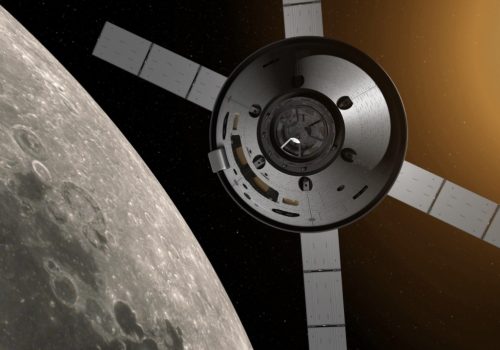Small satellites: The implications for national security
FORWARD DEFENSE
REPORT LAUNCH
The small satellites revolution, or the commercial-led launch of smaller and lower-cost satellites, is impacting space security. This Forward Defense report, authored by nonresident senior fellow Nicholas Eftimiades and produced in partnership with Thales, explores how the US government can leverage small-satellite developments to ensure safe and secure access to and within space.
You can read the Executive summary and select report excerpts below. To read the full report, please click the “Download PDF” button above.
Executive summary
If the United States is to maintain space superiority, it will need to make substantive cultural, doctrinal, and operational changes to its multidimensional relationship with the commercial space industry.
Nicholas Eftimiades
This report examines the relationship between what is often called the commercial “small-satellite revolution” and US national security. The relationship is complex and has many dimensions, not the least of which are organizational behavior, government’s lack of understanding of commercial markets, outdated institutional processes, and a defense bureaucracy unwilling or unable to adapt to the changing environment. It may be worth noting that several of these same problem areas brought about the catastrophe of September 11, 2001. This is not to suggest a “Space Pearl Harbor” event is imminent. However, the threat to space systems will increase proportionately to the degradation of the United States’ ability to maintain space superiority; that is, the ability to ensure safe and secure access to, and in, space.
If the United States is to maintain space superiority, it will need to make substantive cultural, doctrinal, and operational changes to its multidimensional relationship with the commercial space industry. This is because, over the next decade or so, commercial space activities will increase the number of operational satellites by nearly a full order of magnitude, mainly through the development of small satellites. With the growth in the number of satellites come increased capabilities in remote sensing, communications, data processing, and on-orbit operations. A new space ecosystem is coming into being, with profound implications for the world’s security and economic development. The speed at which commercial space companies are putting thousands—soon to be tens of thousands—of satellites into orbit presents unique challenges for US security in space, as well as for deployed armed forces. There will be increased congestion in certain orbits, competition for communications bandwidth, new types of space operations, increased transparency, and a changing threat paradigm. Competing in this changing environment will require the United States to make substantial changes in long-established defense acquisition processes, research and investment strategies, data classification and distribution, and the commercial space regulatory environment.
Key findings
This report explores the trends and technological developments defining the future of the space domain. In doing so, it arrives at six key conclusions.
- The United States will most likely lose space superiority to China within the next decade.
- The Department of Defense (DoD) and the Intelligence Community (IC) are trying to take advantage of the small-satellite revolution. The IC is increasingly investing in commercial small-satellite data, to increase collection capabilities and provide military support.
- The DoD does not generally take a “buy commercial first” approach to space services. Rather, there is an established culture that ignores legislated “commercial first” mandates, and that behavior has become increasingly detrimental to national security interests. Over the last decade, this negative culture has eroded US space superiority, and will continue to do so as the world moves toward quickly developed and deployed, low-cost commercial space systems. For decades, presidential policies directed the executive-branch agencies to buy commercial goods and services before developing government solutions. Almost all of the government and industry experts interviewed for this study believe DoD and the IC ignore those mandates for commercial space capabilities.
- To date, no commercial small-satellite service has proven itself viable without government support. Yet, the growth of this industry will dramatically impact US national security.
- DoD acquisition processes are designed to reduce risk and, as a result, are ill prepared for the high-speed commercial space environment. Senior DoD leaders are making efforts to speed up acquisition processes for small satellites and associated technologies. The results to date are mixed.
- The US Department of Commerce (DoC) Office of Space Commerce (OSC) has made little progress over the last year in executing its responsibilities for Space Traffic Management (STM) and on-orbit mission authorities. Being subordinate to the National Oceanographic and Atmospheric Administration (NOAA) does not allow the office to function at the level required to effectively execute its mission.
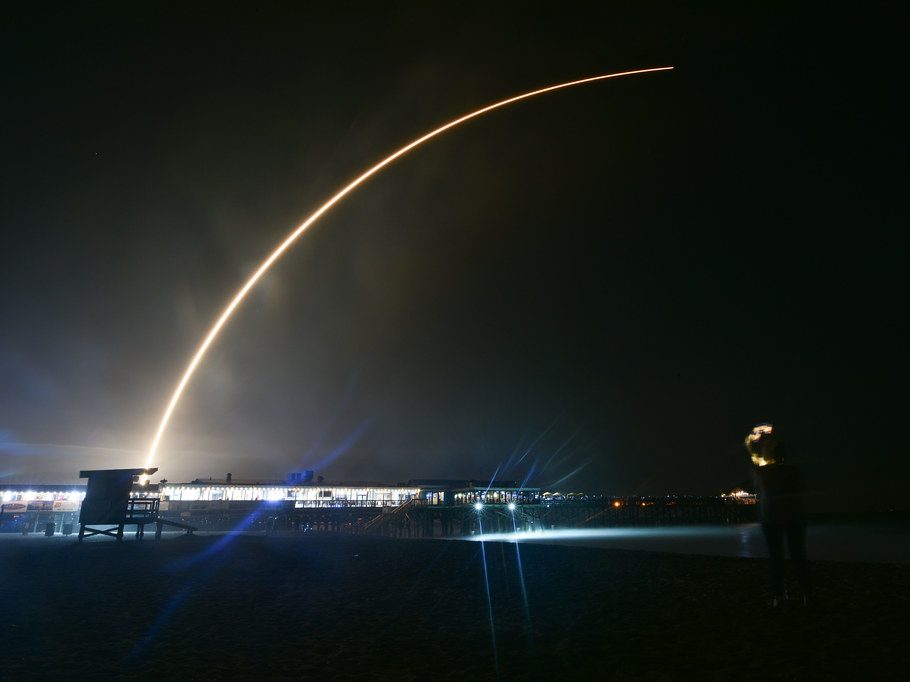
Commercial space development trends
Technology drivers
Commercial innovation in space launch is one of three significant factors driving the small-satellite revolution. The others are miniaturization of technology and increasing computer processing power. Over the last decade, the cost of launching a kilogram of mass to LEO has decreased by 90 percent.1Noah Poponak, “Episode 64: Space—The Next Investment Frontier,” Goldman Sachs, May 22, 2017, https://www.goldmansachs.com/insights/podcasts/episodes/05-22-2017-noah-poponak.html. Poponak is the senior aerospace and defense equity research analyst for Goldman Sachs Research. SpaceX reduced satellite launch costs from approximately $200 million (at United Launch Alliance) to approximately $60 million. SpaceX aims to reduce these launch costs to about $5 million.2“Space: Investing in the Final Frontier,” Morgan Stanley, July 24, 2020, https://www.morganstanley.com/ideas/investing-in-space. As the cost of launch is reduced, many more space missions become profitable business models.
Advances in several key technology categories are changing the cost-benefit analysis of the commercial and national security business case to employ small satellites.
- Mass Production of Satellites: The cost of creating a satellite could be reduced from its current cost, which is in the tens of millions of dollars, by approximately 10 percent through integrating mass production, according to OneWeb (a proposed network of up to nine hundred satellites providing Internet services). 3“About Us,” OneWeb, 2021, https://onewebsatellites.com/about-us/. Production time could then be reduced from years to a single day.4“About Us,” OneWeb, 2021, https://onewebsatellites.com/about-us/. Advancing miniaturization technology will continue to reduce satellite size and cost.
- Processing Power: Planet, an Earth-imaging satellite company, recently launched eighty-eight “Dove” CubeSat satellites, each about the size of a shoebox.5Robbie Schingler, “Planet Launches Satellite Constellation To Image The Whole Planet Daily,” Planet Labs, February 14, 2017, https://www.planet.com/pulse/planet-launches-satellite-constellation-to-image-the-whole-planet-daily/.
- Time to Market: Production time is significantly lower for small-satellite manufacturers. According to Planet’s website, “the most advanced satellites [are] launching into orbit every 3-4 months,” compared to years between ViaSat 1 and ViaSat 2. (In 2012, ViaSat-1 was a record holder for highest-capacity Ka-band satellite in the world, providing broadband coverage to the continental United States.)
Commercial small-satellite growth trends
Overall, the entire commercial space sector has grown significantly in recent years. Startup space companies garnered 1,212 investments between 2000 and 2020. In the year 2020 alone, three hundred and forty-two companies and individuals invested in one hundred and twenty-four startup space companies in more than one hundred and forty business deals. Total investments in 2020 amounted to $7.6 billion. New investors continue to enter the ecosystem. Among two hundred and eleven first-time investors in 2020, one hundred and seventeen were venture-capital firms, twenty-nine were angel investors, and thirty-eight were corporations. Investors from the United States accounted for 36 percent of all investors in 2020.6Applies to all figures in paragraph. “Startup Space: Update on Investment in Commercial Space,” BryceTech, 2021, https://brycetech.com/reports/report-documents/Bryce_Start_Up_Space_2020.pdf. It should be noted that not all investors care about advancing the small-satellite industry. Part of the planning cycle for many investors in small-satellite startup companies is a profit-bearing exit strategy.7Online interview with Dr. Brian Weeden, director of program planning, Secure World Foundation, August 24, 2021.
The global commercial space market is valued annually at $349 billion. In 2018, Morgan Stanley predicted that the space industry would triple in size by 2040. Morgan Stanley’s research identified ninety private companies as being on “the forefront of space disruption.”8“Space: Investing in the Final Frontier,” Morgan Stanley, November 13, 2017, https://www.morganstanley.com/ideas/investing-in-space. Launch and satellite manufacturing companies make up 39 percent of Morgan Stanley’s list of the private space economy, by far the largest segment. In another study, Bank of America and Merrill Lynch projected that the global space industry would reach a value of at least $2.7 trillion in the next three decades (that is, by 2050).9“To Infinity and Beyond—Global Space Primer,” Bank of America and Merrill Lynch, October 30, 2017, 1, https://newspaceglobal.com/wp-content/uploads/imce/u3479/MerrillLynchSpace-Oct2017.pdf.
Demographics, consumer markets, and small satellites
Global demographic changes expected over the next decade are creating a large market for small-satellite services, including mobile and broadband communications, entertainment, and remote sensing. According to the European Commission, by 2030
The global middle class is expected to reach 5.3 billion people. This means an additional 2 billion people with more purchasing power than the earth contains today. Most of this growth will be in Asia. By 2030, China and India together will represent 66% of the global middle-class population and 59% of middle-class consumption.10“Growing Consumption,” European Commission, last visited March 29, 2022, https://knowledge4policy.ec.europa.eu/growing-consumerism_en.
With the rise of the global middle class, Morgan Stanley expects demands for space-based and associated services to increase significantly.
“We estimate that the ~$350b Global Space Industry will grow to a $1.1t+ Global Space Economy by 2040. Our Bull Case of ~$1.75t (+400 bps v. Global GDP) assumes global internet penetration goes to 100% by 2040, while our Bear Case of ~$600b (-60 bps v. Global GDP) assumes that the new satellite networks fail.”11“Investment Implications of the Final Frontier,” Morgan Stanley, October 12, 2017, https://www.fullertreacymoney.com/system/data/files/PDFs/2017/October/20th/msspace.pdf.
The services feeding into the global space economy are consumer television, consumer broadband, mobile satellite services, remote-sensing services, ground equipment, satellite manufacturing, and space-launch services. In time, other services, such as on-orbit satellite servicing and lunar/asteroid mining, may increase the above numbers.
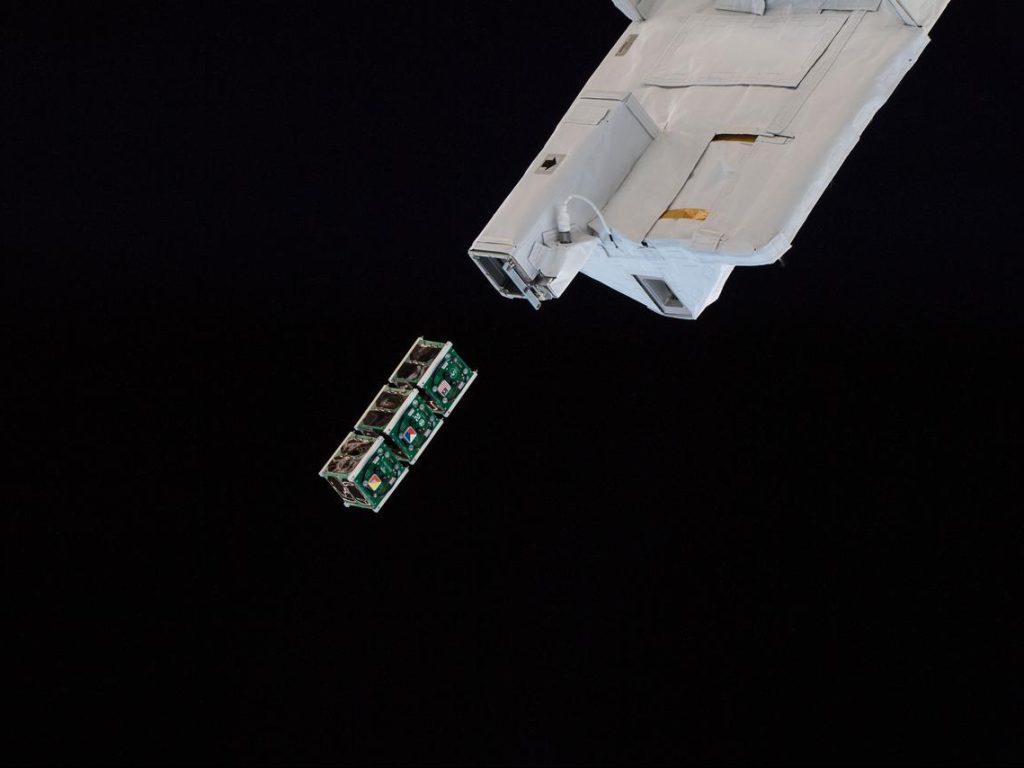
Adversarial space developments
Constellations of hundreds of satellites change the targeting dynamics for US and foreign counterspace capabilities. It is easier for a foreign anti-satellite capability to attack one large target than hundreds of smaller ones… A LEO constellation can suffer the loss of one satellite, or even multiple satellites, and still maintain a degraded capability.
Nicholas Eftimiades
Gen. David Thompson, the Space Force’s vice chief of space operations, has stated that the Space Force responds to “reversible attacks” on US government satellites “every single day,” Thompson further opined that China would surpass the United States as the world’s global space power by the end of the decade.1Josh Rogin, “A Shadow War in Space is Heating up Fast,” Washington Post, November 30, 2021, https://www.washingtonpost.com/opinions/2021/11/30/space-race-china-david-thompson/. This report concurs with that assessment.
Any foreign small-satellite service, whether government owned or commercial, could put secondary payloads on its satellites to collect against or destroy US systems. For example, on July 15, 2020, Russia demonstrated anti-satellite capabilities by detaching a small subject from its satellite Cosmos 2543 to trail a US National Reconnaissance Office satellite.2Caleb Larson, “Space Wars: Meet Russia’s New Anti-Satellite Satellites,” National Interest, July 27, 2020, https://nationalinterest.org/blog/buzz/space-wars-meet-russia%E2%80%99s-new-anti-satellite-satellites-yes-real-165662; “Russia Conducts Space-Based Anti-Satellite Weapons Test,” US Space Command Public Affairs, July 23, 2020, https://www.spacecom.mil/MEDIA/NEWS-ARTICLES/Article/2285098/russia-conducts-space-based-anti-satellite-weapons-test/. Russian satellites conducted similar tests in 2017. These actions threaten US satellites because they can characterize capabilities, interfere with operations, or even destroy the US satellites.
Determining capabilities on foreign small satellites would require exquisite intelligence collection and characterization capabilities, which are difficult now and will be much more so when the numbers of potential threats exponentially increase. The difficulty in determining satellite capabilities was noted as recently as November 2021. The US Space Force reported China’s Shijian 21 in elliptical geostationary transfer orbit as high as 35,813 kilometers above Earth, with an inclination of 28.5 degrees to the equator.3Space Force On November 3, a new object with the international designator 2021-094C was cataloged alongside Shijian (SJ)-21 by Space Force’s 18th Space Control Squadron. The object was believed to be an apogee kick motor (AKM) used to modify its transfer orbit to enter geostationary orbit.

Uncharacteristically, SJ-21 and the AKM flew alongside each other, which was unusual for a discharged AKM. Based on the synchronized orbits, the unidentified object was suspected to be conducting counterspace operational testing, to include rendezvous and proximity operations or manipulation using SJ-21’s robotic arm.4Andrew Jones, “An Object Is Now Orbiting Alongside China’s Shijian-21 Debris Mitigation Satellite,” Space News, November 5, 2021, https://spacenews.com/an-object-is-now-orbiting-alongside-chinas-shijian-21-debris-mitigation-satellite/. If the AKM had performed maneuvers, it would not be the first time China deployed a small satellite that flew in formation with its larger host. The Tongxin Jishu Shiyan-3 (TJS-3) satellite released a payload in 2018 that performed coordinated maneuvers (perhaps an attempt to confuse space-tracking networks).5Paul Seaburn, “Mystery Object Detected Flying Near Chinese Satellite,” Mysterious Universe, November 7, 2021, https://mysteriousuniverse.org/2021/11/mystery-object-detected-flying-near-chinese-satellite/. In January 2022, the SJ-21 maneuvered to capture a defunct Chinese satellite (Compass G2) and towed it to a higher (graveyard) orbit. The SJ-21 then returned to its original geosynchronous orbit.
China’s National Defense in the New Era report stated in 2019 that “Outer space is a critical domain in international strategic competition.”6“China’s National Defense in the New Era,” PRC Ministry of Defense, July 24, 2019, http://eng.mod.gov.cn/publications/2019-07/24/content_4846452.htm. The Chinese Communist Party (CCP) incorporated its plans for space development in its foreign and economic policies. For example, the flagship Belt and Road Initiative (BRI) is a trillion-dollar global infrastructure-development program engaging one hundred and thirty-eight countries. This program is generally considered the largest of its kind in history.
One component of China’s BRI is the Space Information Corridor. In addition to supporting all the companies China has in the BRI, the Space Information Corridor provides remote sensing, communications, and position, navigation, and timing data to all nations.7Jiang Hui, “The Spatial Information Corridor Contributes to UNISPACE+50,” International Cooperation Department, China National Space Agency, 2018, https://www.unoosa.org/documents/pdf/copuos/stsc/2018/tech-08E.pdf. The Space Information Corridor almost certainly supports the newly established Belt and Road National Security Intelligence System, which is China’s Ministry of Public Security using private security companies to provide force-protection information relative to the global BRI infrastructure.
In 2015, Beijing launched the Digital Silk Road (DSR) as an integrated part of the BRI and the Space Information Corridor. Chinese telecommunications companies (Huawei, ZTE, Hikvision, etc.) develop the DSR, which supports BRI companies operating overseas. The DSR develops countries’ “telecommunications networks, artificial intelligence capabilities, cloud computing, e-commerce and mobile payment systems, surveillance technology, and smart cities.”8Joshua Kurlantzick and James West, “Assessing China’s Digital Silk Road Initiative: A Transformative Approach to Technology Financing or a Danger to Freedoms?” Council on Foreign Relations, https://www.cfr.org/china-digital-silk-road/. Some reports assess one third of BRI participants have contracts for DSR support.9Joshua Kurlantzick and James West, “Assessing China’s Digital Silk Road Initiative: A Transformative Approach to Technology Financing or a Danger to Freedoms?” Council on Foreign Relations, https://www.cfr.org/china-digital-silk-road/. Press reports over the years identified instances in which collected data through the DSR have been sent to China. China’s cybersecurity law requires Chinese companies to store all data in the People’s Republic of China. China’s National Intelligence Law mandates that Chinese companies assist the government when requested.
The BRI includes other space-related initiatives, including university collaborations and engineering education throughout the emerging world. Through BRI, DSR, and the Space Information Corridor, China has effectively integrated its space programs, intelligence collection, economy, and foreign policy. This is being achieved throughout emerging economies globally by weaving space capabilities and digital infrastructure into China’s global strategy for economic growth and development. If participation continues to grow as expected, China will democratize space for the world. In so doing, it will also dominate space information globally.
Adversarial governments are likely to leverage commercial small satellites for military and intelligence purposes. This threat is difficult to assess, because there is so little information in the public domain and competitor commercial small-satellite networks are not yet fully deployed. It is likely that the threat to US space systems will increase based on
- Russia’s use of small satellites to surveil US reconnaissance platforms;
- China’s on-orbit proximity operations (testing); and
- China’s Academy of Military Science writings on the use of national security space, along with similar publications like the 2019 Defense White Paper and Space Science & Technology Plan 2050
Recommendations
The following key recommendations address areas of US space policy, the regulatory environment, coordination and cooperation with US allies, and support for the commercial space industry. These recommendations have the same goals: to enhance global space security and advance the US commercial space industry. Advancing the US commercial space industry is a critical component of maintaining global space leadership, and ensuring the safety and security of space systems and national security.
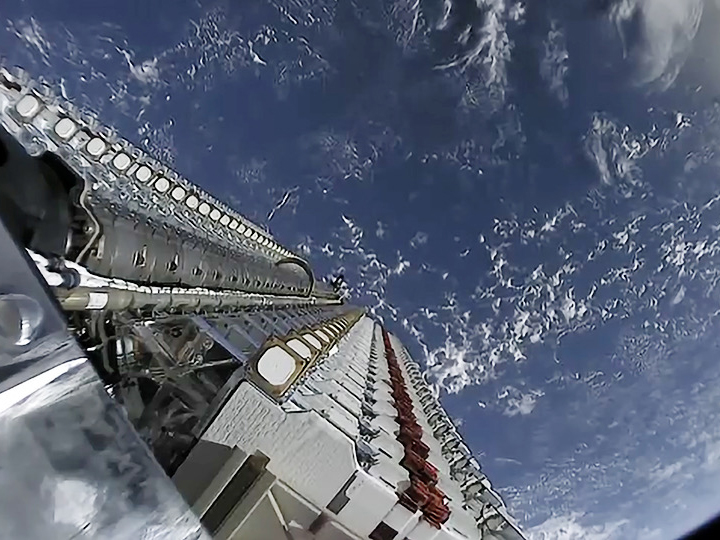
US military, government and civil space
Department of defense and intelligence community
- The DoD should ensure the resilience of US space systems by using commercial systems, including responsive space launch and satellite architectures across multiple orbits, and incorporating allied space capabilities.10“Space Policy and Sustainability,” 15.
- Congress should direct DoD and ODNI to conduct a study to identify national security missions that can be accomplished through commercial space, related services, space communications, and SSA.
- Congress should earmark DoD and IC funds for the purchases of those commercial services. This action will force compliance with US law and increase commercial space services driving innovation through competition.
- Congress and the administration must conduct rigorous oversight to ensure DoD and Intelligence Community organizations enforce policies (including their own) to “buy commercial first.”
- DoD should prototype and acquire small-satellite and related cyber capabilities using OTA and Section 804 authorities. Use of other standard acquisition processes should require a waiver.
- The Joint Chiefs of Staff should establish a program to ensure OPSEC is integrated into doctrine and operational activities employing current awareness of commercial space remote-sensing capabilities and intelligence. This program should include training on foreign and commercial technical capabilities to defeat OPSEC. The program should also be integrated with DoD Perception Management and denial and deception efforts.
- To ensure deterrence against hostile nations, DoD should develop, coordinate, and exercise response strategies to cyberattacks against US and allied commercial space systems. These CONOPS should be done with the IC, DHS, allies, and private industry. This activity could include the National Guard.
- Protocols, treaties, operating rules, etc. will eventually be established by commercial companies as well as governments. The US government (particularly DoD OSD/Space Policy, Defense Threat Reduction Agency, and the Intelligence Community) should have a well-developed, well-thought-out, brilliantly designed plan for verification and compliance (sensors, networks, analysis standards, communication protocols, etc.) This plan should recognize that much of the data will necessarily be shared globally and, therefore, must be unclassified. The plan will support overall US national security and commercial space strategies.
Other US government actors
DHS plays an important role in supporting the commercial space industry in developing standards and best practices. In May 2021, DHS Cyber and Infrastructure Security Agency (CISA) established a Space Systems Critical Infrastructure Working Group. The working group is a mix of government and industry participants developing strategies to minimize risks to space systems that support the nation’s critical infrastructure.11“Space Systems Critical Infrastructure Working Group,” Cyber and Infrastructure Security Agency, May 13, 2021, https://www.cisa.gov/news/2021/05/13/cisa-launches-space-systems-critical-infrastructure-working-group. CISA has also produced several cybersecurity publications and recommended standards relevant to small-satellite systems.
- DHS should lead a study to determine if space systems should be included as one of the national critical-infrastructure sectors. If so, Congress should designate space systems as critical infrastructure, with Department of Commerce as the Sector-Specific Agency.
- DHS should continue to strongly advocate private industry’s adoption of the NIST SP 800-37 Risk Management Framework for Information Systems and Organizations: A System Life Cycle Approach for Security and Privacy. This document provides a recommended cybersecurity risk-management framework for commercial satellite operators.
- DHS should work with the Defense Counterintelligence and Security Agency to develop programs that enhance supply-chain security in the commercial space industry.
- Programs should include training and information sharing enabled through the Space ISAC.
Department of commerce
The DoC plays a significant role in regulating, overseeing, and advancing the US commercial small-satellite industry. It also has a critical function in establishing US leadership in global Space Traffic Management.
- The DoC should purchase commercial SSA data and services, to the maximum extent possible, and secure international data-sharing agreements. DoC should incentivize the private sector to develop innovative analytical tools and advanced services to conduct STM.
- Move the Office of Space Commerce out from under NOAA. OSC’s recently expanded responsibilities for STM and mission authorities make it a poor fit under an entity focused on oceanographic and atmospheric administration. Being buried in NOAA puts the OSC in poor position to conduct the required interagency and international coordination.
- Congress should affirm that the DoC Office of Space Commerce has the requisite on-orbit authorities to allow it to promulgate regulations for on-orbit mission operations that fall outside the current licensing and supervision framework.
- Congress should ensure DoC has appropriate funding to conduct the STM mission and execute it with a “commercial first” approach.
- OSC should fully embrace commercial SSA providers through contracts. It is imperative that this office live up to the requirement to “buy commercial first,” which it has not done to date.
- The OSC should provide clear, deliberate direction to acquire, prioritize, implement, and deploy existing commercial SSA and STM services.
Commercial space actors
One of the challenges facing the small-satellite industry is educating and helping to reorient the DoD and IC. For generations, the US defense and intelligence communities had little concern for economic security and advancing domestic commercial industries. A hostile and competitive rising China has altered the global situation, necessitating closer cooperation between the US national security community and commercial space providers.
- Small-satellite and related industry associations should enhance and coordinate efforts to educate relevant government departments on capabilities, emerging technologies, and the market case for commercial satellites.
US allies and partners
The US faces many foreign policy challenges, including a rising hostile authoritarian China and aggressive military actions from Russia. Space security is a foundational element of ensuring peace with these strategic competitors. The United States must expand its efforts in space diplomacy to ensure coordinated action with allies and establish global standards with partners.
- The Department of State, DoD Office of Space Policy, and Department of Commerce should enhance space diplomatic efforts with the following goals.
- Increase the urgency to establish behavioral norms for space systems, particularly
- Rendezvous and proximity operations;
- notifications and guidelines;
- orbital debris and guidelines; and
- cybersecurity standards.
- Support commercial space industry efforts to enhance Track 2 international collaboration and coordination.
- Establish the US as the global leader and provider of STM.
- Develop an interagency process for unclassified and classified STM and SSA data to be used in international forums.
Generously sponsored by

About the author
Watch the launch event
Subscribe
Sign up for updates from Forward Defense to hear the latest on the trends, technologies, and military challenges shaping tomorrow.

